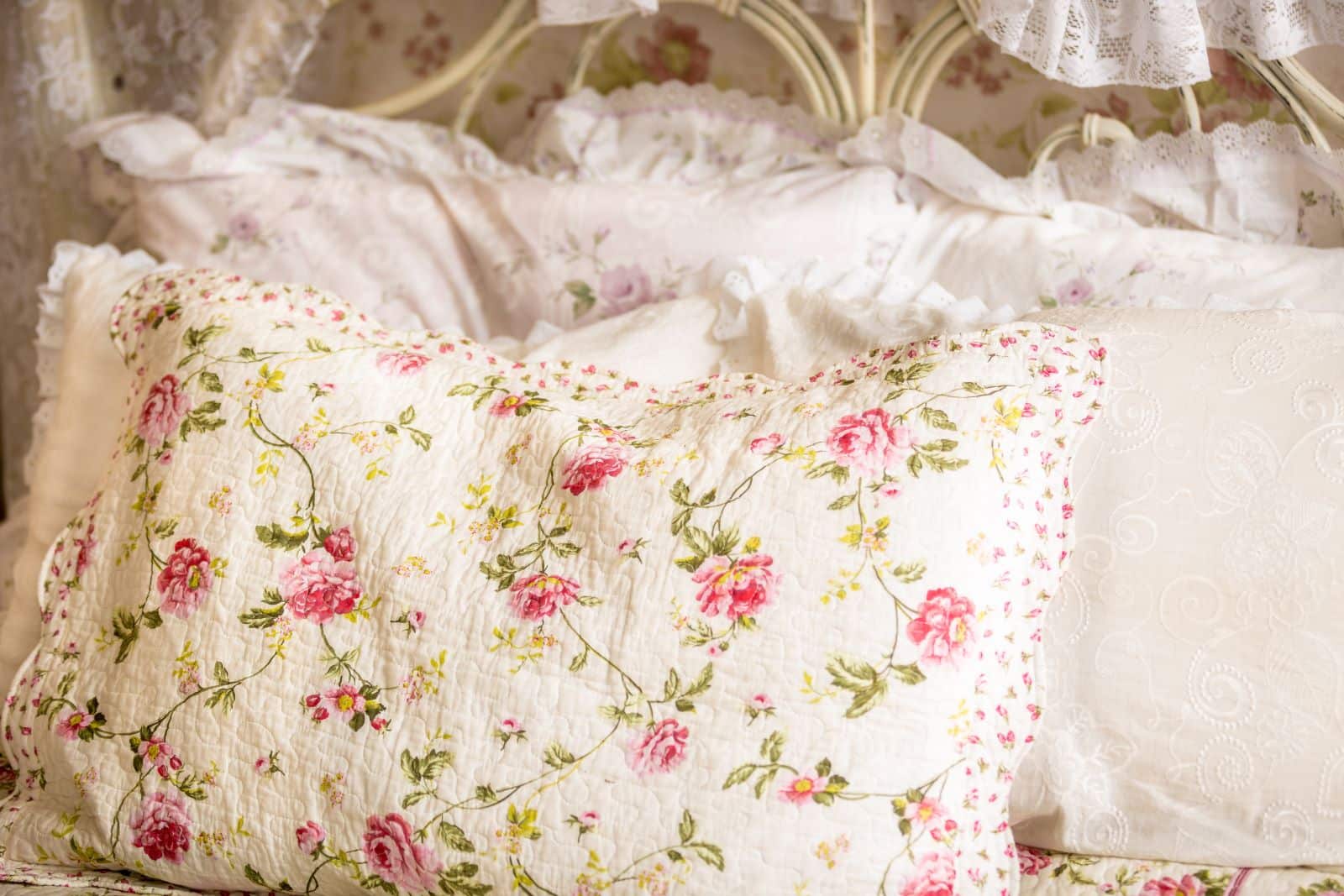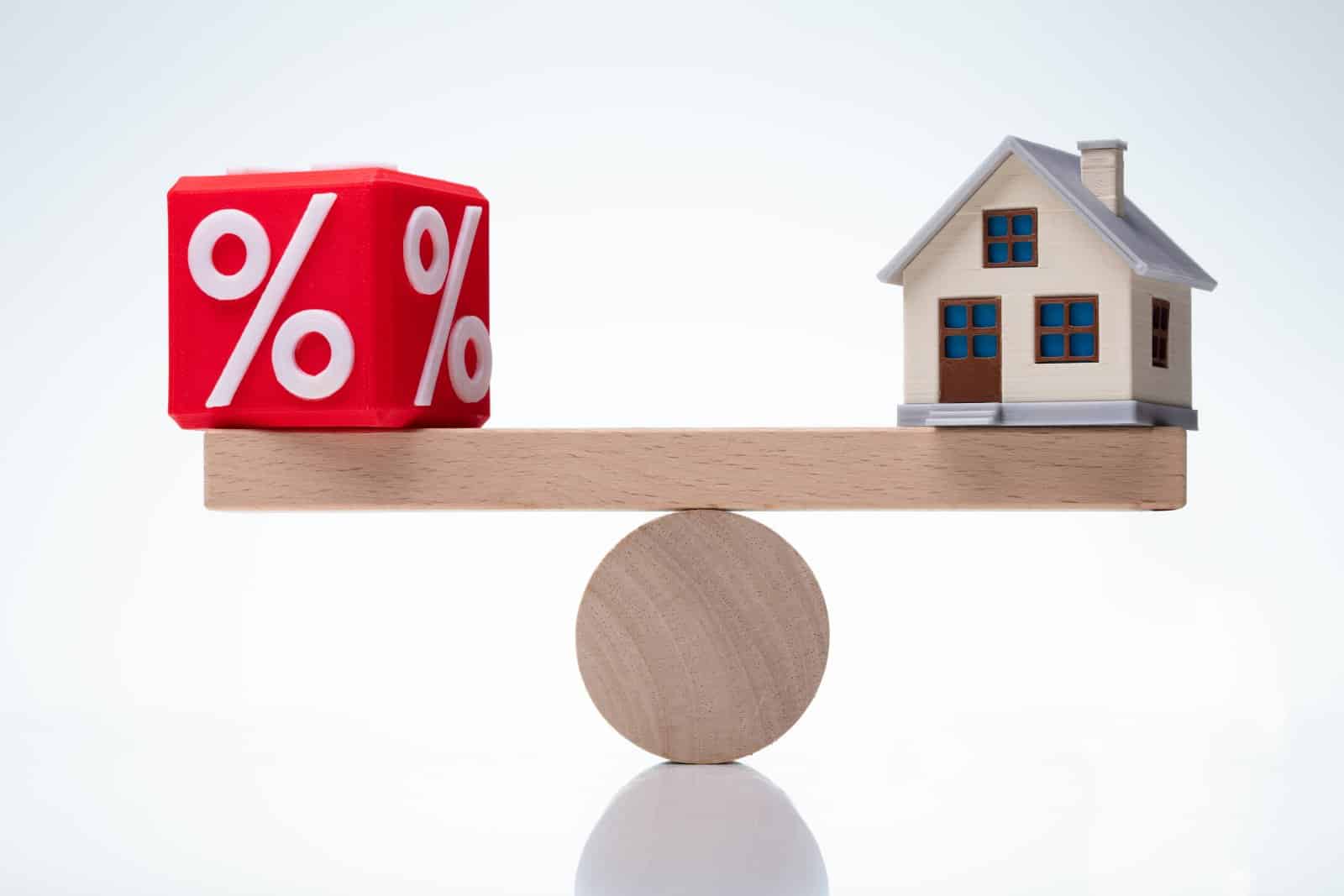
by Thrifty Guardian | Your Money
I love to garden. It’s therapeutic, gets me out in the fresh air, and lets me reconnect with nature. But it can get expensive, too. And, while there are plenty of genuine ways to save money on gardening costs, there’s also some terrible advice and “hacks” out there that will ruin your garden and end up costing you more or wasting your money in the long run.
#1. Overcrowding Plants to Save on Buying More

Image Credit; Shutterstock
Planting too closely to save on buying more plants can lead to overcrowding, which stifles growth and increases disease susceptibility. Plants need adequate space for air circulation and access to nutrients. Overcrowded plants compete for these resources, leading to weaker, less productive gardens.
#2. Using Cheap, Low-Quality Soil

Image Credit: Shutterstock.
Opting for inexpensive, low-quality soil might seem cost-effective but can harm your plants. Poor soil lacks the necessary nutrients and proper drainage, leading to stunted growth and increased vulnerability to pests and diseases.
#3. Making Homemade Pesticides Without Research

Image Credit: Shutterstock.
While homemade pesticides can be cheaper, using them without proper research can be harmful. Some homemade solutions are too harsh, damaging plants or disrupting the garden’s ecological balance. It’s crucial to understand the ingredients and their effects on your specific plants.
#4. Overusing Fertilizer to Boost Growth

Overusing fertilizer, especially chemical ones, to boost growth can lead to nutrient imbalances in the soil and harm plant health. Excessive fertilizer can burn plant roots and disrupt the natural soil microbiome, leading to long-term soil degradation.
#5. Ignoring Professional Advice for DIY Methods

Image Credit: Shutterstock
While DIY methods can save money, ignoring professional advice can lead to costly mistakes. Professionals have the expertise to diagnose and treat garden problems effectively. Misdiagnosing a problem or using incorrect treatments can lead to further damage.
#6. Reusing Diseased Plant Containers

Image Credit: Shutterstock
Reusing containers without properly disinfecting them can introduce diseases to new plants. Containers that previously held diseased plants can harbor pathogens. It’s important to clean and disinfect containers before reuse to prevent the spread of disease.
#7. Choosing Only Inexpensive Plants

Image Credit: Shutterstock
Selecting plants solely based on cost can lead to a mismatch with your garden’s conditions. Inexpensive plants that aren’t suited to your soil type, sunlight, or climate will struggle to thrive, wasting money and effort.
#8. Neglecting Mulch to Cut Costs

Image Credit: Shutterstock
Skipping mulch to cut costs leads to higher water usage and increased weed problems. Mulch helps retain soil moisture, suppress weeds, and improve soil quality. Without it, gardens may require more maintenance and resources.
#9. Overwatering to Promote Growth

Image Credit: Shutterstock.
Overwatering, often done to promote growth, can drown plants’ roots and lead to root rot. Do your research so you understand each plant’s watering needs and provide just enough water to meet them.
#10. Planting Non-Native Species to Save Money

Image Credit: Shutterstock.
Planting non-native species because they’re cheaper can disrupt your garden’s ecosystem. Non-native plants may not be compatible with local wildlife or soil conditions, and they can become invasive, outcompeting native plants.
#11. Using Improper Pruning Techniques to Save Time

Image Credit: Shutterstock.
Improper pruning techniques damage plants. Incorrect cuts can lead to disease, pest infestations, and poor growth. Learning the right pruning techniques for each plant is crucial for their health and aesthetics.
#12. Saving Seeds from Diseased Plants

Image Credit: Shutterstock.
Saving seeds from diseased plants to avoid buying new ones can perpetuate problems. These seeds may carry pathogens, leading to a new generation of diseased plants. It’s safer to purchase healthy, disease-free seeds unless you know how to save seeds properly.
#13. Applying Leftover Chemicals Indiscriminately

Image Credit: Shutterstock.
Applying leftover chemicals, such as herbicides or pesticides, indiscriminately to save on waste can harm beneficial insects and plants. It’s important to follow application guidelines and only use chemicals if absolutely necessary.
#14. Ignoring Pest Infestations to Avoid Costs

Image Credit: Shutterstock.
Ignoring pest infestations to avoid the cost of control can lead to widespread damage. Early intervention is key in managing pests. Neglecting the problem can result in higher costs and more damage over time.
#15. DIY Landscaping Without Proper Planning

Image Credit: Shutterstock.
Undertaking DIY landscaping projects without proper planning and knowledge can lead to poor design and plant choices. You may end up with a yard that requires excessive maintenance, additional water usage, and might not thrive in the long term.
The post When You Dig a Little Too Deep for Gardening Savings first appeared on Thrifty Guardian.
Featured Image Credit: Shutterstock / Maria Sbytova.
The content of this article is for informational purposes only and does not constitute or replace professional financial advice.

by Thrifty Guardian | Your Money
The home design trends of the past have always been influenced by the generation that grew up in them. For boomers, certain styles and designs were considered the epitome of sophistication and elegance, and they often embraced these trends as part of their frugal living ethos.
We take a look at 40 of these forgotten family home trends that remain beloved by Boomers, offering a glimpse into how frugality and smart choices with money have shaped their lifestyles and wealth, even in matters of home decor.
#1. All Wood Furniture

Image Credit: Shutterstock / Art_Maric
Millennials can appreciate the durability of all-wood furniture, a staple in boomer homes, as it often outlasts cheaper alternatives.
#2. Monotone

Image Credit: Shutterstock / Hanna Tsymbaliuk
Embracing a monotone color scheme can be cost-effective for Millennials, as it allows for easier matching of furnishings and decor.
#3. Word Arts

Image Credit: Shutterstock / Africa Studio
Vintage word art adds a touch of nostalgia to homes and can be a budget-friendly way to personalize living spaces.
#4. Pastel Colors

Image Credit: Shutterstock / Africa Studio
Pastel colors can create a calming atmosphere without breaking the bank, making them a practical choice for Millennials.
#5. Vertical Blinds

Image Credit: Shutterstock / Danielle Armstrong
While vertical blinds may be considered old-fashioned, they offer light control and privacy at an affordable price.
#6. Window Valances

Image Credit: Shutterstock / Window Valances
Reviving window valances can be a money-saving alternative to costly curtains or blinds.
#7. Animal Print

Image Credit: Shutterstock / Mike Higginson
Incorporating animal prints sparingly can add a touch of style without the expense of a complete room makeover.
#8. Floral Prints

Image Credit: Shutterstock / kryzhov
Floral prints can still be trendy for Millennials, especially when integrated into accent pieces or throw pillows.
#9. Linoleum Flooring

Image Credit: Shutterstock / StockphotoVideo
Linoleum flooring can be an economical choice that’s easy to maintain, making it a practical option for budget-conscious homeowners.
#10. Nautical Motifs

Image Credit: Shutterstock / Ground Picture
Nautical motifs can evoke a sense of wanderlust and adventure in your decor without overspending.
#11. Fake Fruit

Image Credit: Shutterstock / THIANCHAI THONGSUK
Fake fruit decor is a charming and low-cost way to add color and texture to kitchen spaces.
#12. Faux Plants

Image Credit: Shutterstock / widna
Millennials can opt for faux plants to enjoy the greenery without the commitment and expense of real plants.
#13. Crystal Chandeliers

Image Credit: Shutterstock / Rostov Oleksandr
Vintage crystal chandeliers can lend an air of luxury to a room without the high-end price tag.
#14. Popcorn Ceilings

Image Credit: Shutterstock / MC Media
Instead of removing popcorn ceilings, Millennials can embrace them as a unique design element or paint them to freshen up the look.
#15. Vaulted Ceiling

Image Credit: Shutterstock / Artazum
Vaulted ceilings can make a room feel more spacious without the need for extra square footage.
#16. Carpeted Bathrooms

Image Credit: Shutterstock / sirtravelalot
Carpeted bathrooms may seem unusual to Millennials, but they offer comfort and warmth without the need for cold tiles.
#17. Open Shelving

Image Credit: Shutterstock / stock_studio
Open shelving can be an affordable way to display and organize kitchen items, creating a trendy and functional space.
#18. Stereo Racks

Image Credit: Shutterstock / Vizbara
Repurpose vintage stereo racks as unique storage solutions, combining style and practicality.
#19. Mass-Produced Furniture and Art

Image Credit: Shutterstock / New Africa
Millennial homeowners can find budget-friendly, mass-produced furniture and art pieces to fill their homes stylishly.
#20. Furniture Skirts

Image Credit: Shutterstock / GracePhotos
Furniture skirts can add a touch of elegance while hiding wear and tear on older furnishings.
#21. High Back Dining Chairs

Image Credit: Shutterstock / Jason Finn
High-back dining chairs can create an upscale dining atmosphere without a high-end price tag.
#22. Clear Furniture

Image Credit: Shutterstock / yampi
Transparent furniture pieces can make small spaces appear less crowded and are often more affordable than solid alternatives.
#23. Midcentury Modern

Image Credit: Shutterstock / Aspects and Angles
Embracing midcentury modern design can offer timeless style at a reasonable cost.
#24. Mirrored Closet Doors

Image Credit: Shutterstock / Procreators
Mirrored closet doors can make rooms feel larger and more open without the need for expensive renovations.
#25. Glass Block Showers

Image Credit: Shutterstock / mbHY!8e7y5NzXvx
Glass block showers provide privacy and natural light, making them an attractive and budget-friendly option.
#26. Ceramic Decorations

Image Credit: Shutterstock / Morrowind
Ceramic decorations can be an affordable way to add artistic touches to your home.
#27. China Display

Image Credit: Shutterstock / Ground Picture
Displaying fine china can infuse elegance into dining spaces while showcasing cherished heirlooms.
#28. Terrazzo Pattern

Image Credit: Shutterstock / jordaneil
Terrazzo patterns can be recreated with budget-friendly materials for a trendy and economical flooring option.
#29. Accent Walls

Image Credit: Shutterstock / Chamomile_Olya
Creating accent walls with affordable paint or wallpaper can transform a room’s look without a hefty price tag.
#30. Bulky Corner Tubs

Image Credit: Shutterstock / Jason Finn
Bulky corner tubs can provide relaxation without the need for a costly spa renovation.
#31. Sleigh Beds

Image Credit: Shutterstock / Mike Higginson
Sleigh beds can add a touch of romance and luxury to bedrooms without breaking the bank.
#32. Tile Countertops

Image Credit: Shutterstock / BUNDITINAY
Opting for tile countertops can be a cost-effective way to achieve a unique and stylish kitchen look.
#33. Tiffany Lamps

Image Credit: Shutterstock / milosljubicic
Vintage Tiffany lamps can illuminate your space with timeless charm while remaining budget-friendly.
#34. Lace Doilies

Image Credit: Shutterstock / Frances van der Merwe
Incorporate lace doilies for a touch of vintage elegance in your decor without spending a fortune.
#35. Wood Paneling

Image Credit: Shutterstock / Jodie Johnson
Wood paneling can be repurposed for a rustic or cozy ambiance without the cost of major renovations.
#36. Gold Hardware

Image Credit: Shutterstock / Hendrickson Photography
Gold hardware accents can bring a touch of opulence to your home without a hefty price tag.
#37. Worn Out Phrases

Image Credit: Shutterstock / flyesra
Decorate with worn out phrases that hold sentimental value or add character to your space.
#38. Carpeted Toilet Seat Cover

Image Credit: Shutterstock / ARENA Creative
Revive vintage carpeted toilet seat covers as quirky and nostalgic bathroom decor.
#39. Knitted Table Runners and Curtains

Image Credit: Shutterstock / MARYIA SAMALEVICH
Handmade knitted table runners and curtains can add warmth and character to your home.
#40. Farmhouse Style

Image Credit: Shutterstock / Vadim Ovchinnikov
Embrace farmhouse-style decor for a timeless and budget-friendly aesthetic in your living spaces.
These frugal design choices from the past can inspire cost-conscious Millennials to create stylish and economical homes.
The post Budget-Friendly Home Trends Boomers Love first appeared on Thrifty Guardian.
Featured Image Credit: Shutterstock / Pressmaster.
For transparency, this content was partly developed with AI assistance and carefully curated by an experienced editor to be informative and ensure accuracy.

by Thrifty Guardian | Your Money
Technical analysis (TA) is a key tool in the investing world, yet it is often shrouded in misunderstandings and controversy. For new investors in particular it is critical to understand along with its inherent risks.
Understanding Technical Analysis

Image Credit: Shutterstock / Andrey_Popov
Technical analysis, or TA, is a method used by traders and investors to determine the best times to enter and exit trades. It involves analyzing stock quantitative price patterns and trends. TA is not about predicting the future with certainty; it’s about making educated guesses based on historical data.
The Misconceptions

Image Credit: Shutterstock / Viktoriia Hnatiuk
Often criticized as mere speculation or even fortune-telling, technical analysis faces much skepticism. This skepticism is partly due to the over-promotion of unreliable trading systems online. However, understanding its proper use and limitations is key to leveraging its benefits effectively.
A Tool, Not a Magic Wand

Image Credit: Shutterstock / Freedomz
TA is not a standalone strategy for guaranteed profits. It’s a supplementary tool that, when used correctly, can enhance trading decisions. It’s vital to remember that TA is just one aspect of a comprehensive trading strategy.
Indicators and Strategies

Image Credit: Shutterstock / SkazovD
Technical analysis encompasses various indicators and strategies, focusing on aspects like momentum, trend, and volatility. These indicators help in identifying potential bullish or bearish market conditions and assist traders in making more informed decisions.
The Role of Chart Studies

Image Credit: Shutterstock / Zodar
Apart from indicators, chart studies play a crucial role in TA. They involve identifying key price ranges, support, and resistance levels using tools like trend lines and Fibonacci patterns. These studies aid in understanding market dynamics more thoroughly.
Limitations of TA

Image Credit: Shutterstock / Lim Yong Hian
It’s important to acknowledge that TA cannot predict unforeseen market events or company announcements that can drastically affect stock prices. Over-reliance on technical analysis without considering other factors can lead to misguided trading decisions.
Risks for New Investors

Image Credit: Shutterstock / Nattawit Khomsanit
For newcomers to the investment world, understanding the risks associated with TA is crucial. Misinterpreting data or solely relying on TA without a broader market understanding can lead to significant financial losses.
Essential Risk Management

Image Credit: Shutterstock / fizkes
Risk management is a fundamental aspect of using technical analysis effectively. Investors should be aware of their investment capacity, set clear stop-loss limits, and establish realistic profit targets to mitigate potential losses.
The Pitfall of Overconfidence

Image Credit: Shutterstock / Ground Picture
New investors often fall into the trap of overconfidence when using TA. Misusing indicators or ignoring risk management can result in severe financial setbacks. A balanced approach is key.
Integration with Investment Strategies

Image Credit: Shutterstock / Hryshchyshen Serhii
Integrating TA with overall investment strategies enhances its effectiveness. It should not be the sole basis for trading decisions but rather a component of a diversified investment approach.
Understanding Market Signals

Image Credit: Shutterstock / GaudiLab
Learning to interpret market signals through technical analysis is a skill that requires time and practice. New investors should approach TA with a mindset of continuous learning and adaptation.
Avoiding Common Mistakes

Image Credit: Shutterstock / SFIO CRACHO
Common mistakes in using TA include over-relying on indicators, not back-testing strategies, and inadequate understanding of market context. Avoiding these pitfalls can lead to more successful investment outcomes.
The Reality of Market Fluctuations

Image Credit: Shutterstock / ESB Professional
The stock market is inherently unpredictable. TA can provide insights, but it cannot guarantee outcomes. Investors should be prepared for market fluctuations and adjust their strategies accordingly.
Building a Solid Foundation

Image Credit: Shutterstock / Ground Picture
New investors should focus on building a solid foundation in market understanding and investment principles. Technical analysis should complement this foundation, not replace it.
Long-term Perspective

Image Credit: Shutterstock / fornStudio
While TA can be useful for short-term trading, maintaining a long-term perspective is crucial. Understanding market trends over time can lead to more sustainable investment decisions.
Be Mindful of Risks

Image Credit: Shutterstock / Viktoriia Hnatiuk
Technical analysis is a valuable tool, but it’s not infallible. For new investors, the key is to use TA as part of a balanced, well-informed investment strategy, always keeping in mind the potential risks and the importance of ongoing learning and adaptation in the ever-changing world of finance.
The post Investing Smart: Strengths and Weaknesses of Technical Analysis first appeared on Thrifty Guardian.
Featured Image Credit: Shutterstock / Viktoriia Hnatiuk.
The content of this article is for informational purposes only and does not constitute or replace professional financial advice.

by Thrifty Guardian | Your Money
In 2024, savers face a whole host of challenges and opportunities. With anticipated shifts in interest rates, understanding how to maximize returns on savings is crucial.
Understanding the Forecast

Image Credit: Shutterstock / Thapana_Studio
Following a period of high rates, experts are predict a decline in interest rates for 2024. This shift impacts savings accounts, Certificate of Deposit accounts (CDs), and other interest-bearing accounts.
Staying informed and proactive is key to maximizing returns in this dynamic environment.
Lock in High CD Rates Now

Image Credit: Shutterstock / Vitalii Vodolazskyi
Securing a high CD rate before potential declines can lock in better returns. CDs offer stable interest rates over their term, making them a solid choice for funds not immediately required. The provide a fixed return on investment for the duration of the CD.
Protect Against Decreases

Image Credit: Shutterstock / Kenneth William Caleno
Similar to locking in a low mortgage rate, securing a high CD rate can protect from future rate decreases. This strategy guarantees continued benefits from current high rates, even if the overall rate environment declines.
Exploring High-Yield Savings

Image Credit: Shutterstock / FON’s Fasai
High-yield savings accounts offer more flexibility than CDs. While their rates might fluctuate, choosing a financial institution with a history of competitive rates can optimize earnings. It is necessary to balance liquidity needs and return goals when choosing between CDs and high-yield savings.
The Role of Money Market Accounts

Image Credit: Shutterstock / Wanan Wanan
Money market accounts blend the features of savings and checking accounts, often offering higher interest rates with certain restrictions. They are a viable option for savers seeking higher returns without locking funds away, as in CDs.
Investing in Fixed-Income Assets

Image Credit: Shutterstock / Inna Kot
Fixed-income investments like Treasury bills or bonds provide a more secure investment option with steady interest returns. While these might offer lower yields than other assets, their stability can be appealing in a volatile rate environment.
Assessing Annuities for Higher Yields

Image Credit: Shutterstock / PeopleImages.com – Yuri A
Annuities, particularly multi-year guaranteed annuities, can offer high yields with the added benefit of tax-deferred interest. However, they often come with fees and penalties, making them a complex choice requiring careful consideration.
Navigating Rate Fluctuations

Image Credit: Shutterstock / Pixelated 275
Regardless of rate trends, opportunities to earn significant interest income exist. Being aware of the products available and adjusting strategies as rates change will help maximize returns.
Locking in Rates for Long-Term Gains

Image Credit: Shutterstock / Svetlana Lukienk
If rates fall, locking in high rates now can safeguard returns for years. This proactive approach ensures that savers can benefit from the current high-rate environment, despite future decreases.
Potential for Rate Increases

Image Credit: Shutterstock / faithie
Conversely, if rates rise, having investments nearing maturity makes it possible to take advantage of higher rates quickly.
Early withdrawal penalties might apply for longer-term investments, but they might be offset by the benefits of reinvesting at higher rates.
Diversifying Savings Strategies

Image Credit: Shutterstock / suksom
Diversifying across different account types and investment vehicles can help balance risk and reward.
Combining CDs, high-yield savings, and fixed-income assets can create a robust savings portfolio capable of adapting to rate changes.
Working with Financial Advisors

Image Credit: Shutterstock / ESB Professional
Consulting with financial planners can provide tailored advice to align one’s savings strategy your long-term financial goals.
They can help navigate the complexities of the interest rate environment to optimize savings for the long term.
Staying Flexible

Image Credit: Shutterstock / Lek_charoen
In a changing interest rate environment, regularly reviewing savings and investment strategies ensures savers are always positioned to maximize returns.
The Importance of Financial Education

Image Credit: Shutterstock / fizkes
Educating yourself about different savings and investment options empowers savers to make knowledgeable decisions.
It is important to utilize resources and tools available to stay updated on the latest financial trends and strategies.
Planning for the Future

Image Credit: Shutterstock / Prostock-studio
Looking ahead, it is important to consider how today’s decisions will impact long-term financial health.
Whether planning for retirement, major purchases, or financial emergencies, a well-thought-out savings strategy is essential.
Stay Informed

Image Credit: Shutterstock / Zivica Kerkez
By understanding the interest rate environment and employing smart strategies, savers can effectively navigate changes and make the most of their investment capital.
It is crucial to stay informed, diversify a savings approach, and seek professional advice to make the most of one’s financial future.
The post Stretching Your Dollars in 2024: Essential Saving Tips first appeared on Thrifty Guardian.
Featured Image Credit: Shutterstock / Krakenimages.com.
The content of this article is for informational purposes only and does not constitute or replace professional financial advice.

by Thrifty Guardian | Your Money
The housing crisis in the United States has left many people in vulnerable situations, and millennials are feeling the brunt of its impact. There are options for homeownership even in a contentious market.
The State of the Market

Image Credit: Shutterstock / Simone Hogan
It’s no secret that the housing market is struggling to recover after mortgage rates soared in 2023, pricing many would-be buyers out of the option to own their own home.
A Change to the Status Quo

Image Credit: Shutterstock / Svitlana Hulko
Prior to the rate surges, millennials were starting to represent a greater proportion of homeowners in the United States. As of 2022, over half of American millennials owned their homes.
Factors Affecting Homeownership

Image Credit: Shutterstock / Pormezz
Now that there is a housing shortage and interest rates are still hovering around 6%, the remaining millennials are left to wonder whether their homeownership hopes are futile.
Housing Market Whiplash

Image Credit: Shutterstock / Deemerwha studio
Millennials lived through the 2008 recession, followed by the historically low-interest rates of the 2010s, then interest rates over 8% post-pandemic. This understandably gave many older millennials a sense of housing market whiplash as they tried to figure out when to buy.
Predicted Balance

Image Credit: Shutterstock / Andrey_Popov
“I think we are in for a period of relatively flat housing price performance around the country as high mortgage rates put downward pressure on prices, while significant demand from household formation and an inventory shortage place upward pressure,” said housing economist Ken H. Johnson.
He expects that the elements at play will bring balance to the industry.
Looking Toward Homeownership

Image Credit: Shutterstock / michaeljung
As the market moves into 2024, millennials who are still renting look toward the seemingly stabilizing market in hopes of purchasing a home this year.
Navigating that landscape is difficult for folks in their late 20s to early 40s who hope to break out of the rental cycle, but there are ways to make the home-buying process easier and more attainable.
Down Payment Assistance Programs

Image Credit: Shutterstock / Tada Images
Down payment assistance programs (DPAs) are available in almost every state. Some employers, government agencies, and other organizations have programs that give grants to first-time homebuyers to put towards buying a home.
A Helping Hand for Millennials

Image Credit: Shutterstock / BongkarnGraphi
The rules and guidelines for each of these grants vary but typically have income limits and rules about when you can sell or refinance the property.
These programs are excellent resources for millennials who are ready to buy but don’t have the funds saved for a down payment.
Gifts from Relatives or Friends

Featured Image Credit: Shutterstock / Kaikoro
Mortgage guidelines allow for relatives (and even friends, under certain circumstances) to provide down payment funds in the form of a gift to a homebuyer.
This typically involves both parties signing a gift letter which states that the money is not a loan and does not have to be paid back. It can be paid to the buyer directly or sent to the closing agent to be applied to the purchase.
Buying In More Affordable Locations

Image Credit: Shutterstock / silverkblackstock
Many millennials have opted to relocate to areas of the country with lower costs of living. Homes are often cheaper in middle America and the south, making homeownership more attainable.
Remote Working Means Flexibility

Image Credit: Shutterstock / Vadym Pastukh
Since so many jobs can be done remotely in a post-COVID world, it matters less and less where you live. Some people are able to get remote jobs in a large city and live in rural areas where costs are lower.
Knowing What Options Are Available

Image Credit: Shutterstock / Vitalii Vodolazskyi
For millennials who are veterans or current military members, the VA (Veterans Affairs) loan offers a mortgage at 100% financing, eliminating the need for a down payment.
Homebuyer Loans

Image Credit: Shutterstock / SaiArLawKa2
Homebuyers who make less than their area’s median income and are buying in rural areas may qualify for USDA loans, which also don’t require a down payment. FHA loans start at as much as 96.5% financing, requiring only 3.5% of the purchase price as a down payment on a new home.
Those loans are available for properties that qualify and can often cater to buyers with lower credit scores.
Mortgage Options

Image Credit: Shutterstock / Priceless-Photos
Conventional mortgages require down payments, but there are options to obtain private mortgage insurance or obtain certain types of first-time homebuyer loans that make those mortgages easier to obtain.
Programs through Fannie Mae and Freddie Mac can lower a down payment from the standard 20% to something that is easier to handle.
Flexible Down Payments

Image Credit: Shutterstock / Vitalii Vodolazskyi
Statistically, millennials opt for mortgages that allow them to put down 10% of the home’s price, financing the rest.
Private mortgage insurance rates vary, but allow for more flexibility in the down payment, which is an advantage for millennials whose adult years have been plagued by economic difficulties nationwide.
A Changing Landscape

Image Credit: Shutterstock / Andrii Yalanskyi
2024 homebuyers can expect to see slightly lower rates, but experts don’t think a crash is coming. Yun says that prices may stabilize, but inventory is still low and the expectation is that the overall market will correct itself soon.
“We will not have a repeat of the 2008-2012 housing market crash,” said Lawrence Yun, Chief Economist from the National Association of Realtors. “There are no risky subprime mortgages that could implode, nor the combination of a massive oversupply and overproduction of homes.”
Take Heart

Image Credit: Shutterstock / Songsak C
Millennials can take heart – their homeownership dreams have not been crushed, and there are options for buying if they know where to look.
The post Millennial Home-Buying in 2024: Smart Strategies for Success first appeared on Thrifty Guardian.
Featured Image Credit: Shutterstock / 4 PM production.
The content of this article is for informational purposes only and does not constitute or replace professional financial advice.













































































































